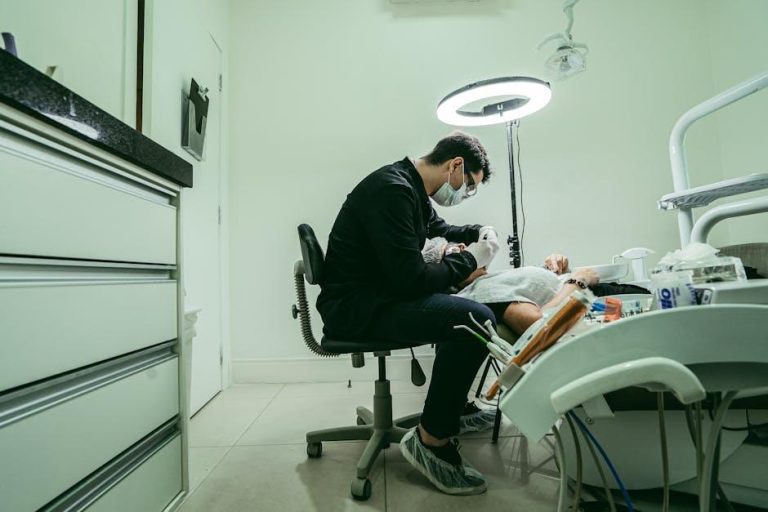
What Qualifies As A Dental Emergency? – Texas A&M
Dental emergencies can strike unexpectedly, causing pain and distress that require immediate attention. For students, faculty, and residents around the Texas A&M area, understanding what qualifies as a dental emergency is crucial to ensure prompt and effective care when it matters most. This comprehensive guide will walk you through common dental emergencies, symptoms to watch for, and steps to take during an urgent dental situation.
What Is Considered A Dental Emergency?
A dental emergency refers to any oral health issue that demands immediate professional intervention to save teeth, stop bleeding, alleviate severe pain, or prevent infection. Not all toothaches or dental problems require an emergency room visit, but timely care significantly impacts recovery and long-term oral health.
Common Types of Dental Emergencies
- Knocked-Out Tooth (Avulsed Tooth): A tooth completely dislodged from its socket.
- Severe Toothache: Intense, persistent pain that does not improve with home treatment.
- Broken or Chipped Tooth: Especially if it causes sharp pain or exposes the tooth nerve.
- Lost Filling or Crown: Causes discomfort or sensitivity and exposes the tooth to further damage.
- Dental Abscess: An infection causing swelling, pus, and fever.
- Trauma to the Jaw or Face: Injuries resulting in swelling, bleeding, or difficulty moving the jaw.
- Uncontrollable Bleeding: Following dental injury or extraction.
Signs You Should Seek Emergency Dental Care Near Texas A&M
Knowing when to seek urgent dental care can prevent complications and improve healing outcomes. If you notice any of the following signs, reach out to a dental professional promptly:
- Severe pain lasting more than 24 hours
- Swelling around the face, neck, or jaw
- Bleeding that doesn’t stop within 10-15 minutes
- Tooth knocked out or pushed out of position
- Difficulty breathing or swallowing due to oral swelling
- High fever with mouth pain
How To Handle A Dental Emergency: Practical Tips
While waiting for emergency dental care near Texas A&M, here are some helpful first-aid tips to minimize damage and ease discomfort:
- Knocked-Out Tooth: Handle by the crown (avoid touching root), rinse gently with water, and try to place it back in the socket or store in milk/saline solution.
- Broken Tooth: Rinse mouth with warm water and apply cold compresses to reduce swelling.
- Severe Toothache: Rinse with warm salt water and take over-the-counter pain relievers; avoid placing aspirin directly on gums.
- Bleeding: Apply firm pressure with gauze or a clean cloth to stop bleeding.
- Swelling: Use cold compresses externally and keep your head elevated.
Dental Emergency vs. Urgent Dental Care: What’s The Difference?
While dental emergencies require immediate care to prevent severe consequences, urgent dental care involves less critical issues that still need prompt attention to reduce pain and avoid complications. Here’s a quick comparison:
| Criteria | Dental Emergency | Urgent Dental Care |
|---|---|---|
| Time Sensitivity | Needs care within hours | Needs care within 1–2 days |
| Examples | Knocked-out tooth, severe bleeding, jaw fracture | Lost filling, mild toothache, broken tooth without pain |
| Risk of Complications | High risk (infection, permanent damage) | Moderate risk if untreated |
| Recommended Action | Seek emergency dentist or ER | Schedule urgent dental appointment |
Emergency Dental Services Available Near Texas A&M
If you are in the Texas A&M area, several dental clinics offer emergency services tailored to handle urgent and traumatic dental situations. Many accept walk-ins or same-day appointments for emergencies. Consider contacting:
- Texas A&M University Student Health Services Dental Clinic – Convenient for students and staff
- Local private dental offices with emergency availability
- 24/7 urgent care centers with dental capabilities
Benefits of Prompt Emergency Dental Care
Acting quickly when a dental emergency occurs has multiple benefits, including:
- Increased chances to save damaged or knocked-out teeth
- Minimized pain and infection risk
- Preventing costly and extensive future treatments
- Reducing anxiety and stress related to oral injuries
Case Study: Saving a Knocked-Out Tooth at Texas A&M
John, a Texas A&M student, experienced a soccer accident that resulted in a knocked-out front tooth. By following emergency instructions—placing the tooth in milk and reaching his dental clinic within an hour—John’s dentist was able to successfully reimplant the tooth. The tooth healed well with minimal complications, preserving John’s smile and avoiding implants or dentures. This case highlights the importance of knowing what qualifies as a dental emergency and acting swiftly.
Conclusion
Knowing what qualifies as a dental emergency is essential for anyone living or studying near Texas A&M. Whether it’s a knocked-out tooth, severe tooth pain, or uncontrollable bleeding, timely professional intervention can save your teeth and overall oral health. Always be prepared with first-aid tips, understand when to seek emergency dental care, and know your local resources for urgent treatment. Don’t hesitate to contact a trusted dental provider at the first sign of a serious dental problem.
Remember: When in doubt, consult a dental professional quickly to avoid further complications and protect your smile.


